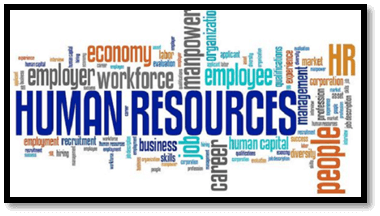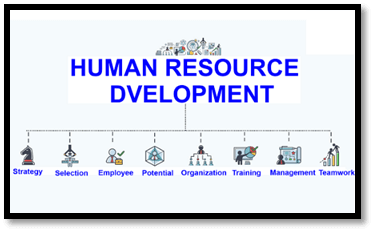What is the full form of HRDHRD: Human Resource DepartmentThe group of people who work for a company, industry, or economy collectively constitute its human resources. A more precise concept is the knowledge and skills that people possess or human capital. Similar concepts include labour, co-workers, personnel, and manpower. 
The HRD (Human Resources department) of an organization oversees a variety of workforce tasks such as making sure that labour laws, as well as employment standards, are followed, conducting interviews & choosing employees, managing performance, handling employee benefits, setting up employee files with the appropriate documentation for future use, & managing a few elements of talent acquisition & employee off-boarding. They serve as a mediator between the management and employees of a company. The responsibilities include planning interviews, arranging background checks, and organizing resumes and application forms. They also involve organizing the hiring and choosing procedure. Another responsibility is perk & payroll administration, which involves keeping track of vacation & sick time, auditing payroll, & taking part in benefit-related tasks like claim settlement, benefit statement reconciliation, & invoice payment approval. Employee counselling is just one of the programmes and activities that HR organizes in regard to employees. The last responsibility is routine maintenance, which includes performing payroll/benefit-related reconciliations, maintaining employee benefits & job status current, and making sure the current HR files and databases are up to date. OriginThe Distribution of Wealth, a seminal work by the revolutionary economist John R. Commons, made a passing reference to "human resource" but did not go into further detail. Even by the early 1950s, the phrase had come to mean using a person as a means to an aim after being used to promote the notion that humans have value (as in basic humanity) from the 1910s through the 1930s (for employers). In a 1958 paper by economist E. Wight Bakke, the phrase was first used in that context, according to experts. It is important to comprehend the following in relation to how people react to changes in a labour market: Skills & qualifications: As companies transition from labour to more management professions, there is a greater need for highly skilled personnel. Corporations must compete over employees if the labour market is "tight" (i.e., there aren't enough people to fill all the open positions). Geographical distribution: How much further is the person's employment from them? The commute time should be reasonable given the pay, and who applies for a post is also influenced by the local transportation and infrastructure. Occupational structure: The standards and principles that guide the many occupations inside a company. Craft (loyalty to the trade), Organisation Career Path (progress through the company), & Unorganized (lower/unskilled workers who work as needed) are three different types of occupational hierarchy that Mahoney (1989) developed. Different age groups of employees have distinct traits, such as their conduct and expectations of the company, due to generational differences. IssuesOne significant worry with treating humans as resources or assets is the possibility of commodification, objectification, and abuse. Humans are social and creative beings working in a productive industry, not "commodities" or "resources." Contrarily, the 2000 revision of ISO 9001 mandates the identification of the processes, their order, and interaction, as well as the definition and communication of roles and authority. In general, these strategies have been adopted and pushed by highly unionized countries like France and Germany. Additionally, in 2001, the International Labour Organization (ILO) made the decision to review and amend its 1975 Recommendation 150 concerning Human Resources Development, which led to the creation of its "Labour is Not a Commodity" policy. According to one interpretation of these trends, solid social consensus on political economy, as well as an effective social welfare system, encourage labour mobility and tend to increase overall economic productivity because workers can gain knowledge and experience in a variety of ways and move from one business to another without much controversy or difficulty adapting. 
Labour mobility and a larger philosophical debate over the term "human resources" are two other significant topics of debate. Governments of developing countries frequently view industrialized countries that promote immigrants or "guest workers" as plundering human resources that is more appropriately a part of the developing country and necessary to support its economic success. In order to ensure that a developing country losing its human capital does not lose the ability to continue training new people in trades, occupations, and the arts, the UN has gradually come to more typically support the viewpoint of developing nations. To this end, the UN has also requested sizeable offsetting "foreign aid" contributions. To remove this stigma, several organizations and enterprises are deciding to rename this department using different terminology, such as "people operations" or "culture department." Concepts related to TerminologyIndia was the first nation to use the term "national human resource development" to describe its holistic approach to developing human resources in the middle of the 1980s. NHRD is frequently referred to as "Human Resource Development," particularly when a specific national context is mentioned (HRD). For example, the Human Resource Development Council (HRDC) of South Africa was created to coordinate the work of several government agencies in order to promote "a culture of training as well as lifelong learning at personal, organizational, and national levels." Human resource development (HRD), which deals with issues of training and growth on an overwhelmingly organizational level of study, is sometimes considered as including NHRD. Maternal health & international policymaking are two examples of social and intuitive issues that are often not taken into account by practitioners of human resource development (HRD). Additionally, governments around the world, global development performers like the United Nations, as well as other civil society organizations use the term and occasionally conceptualize NHRD individually from issues of either employee relations or organizational culture. 
Due to its interdisciplinary approach, NHRD is influenced by other disciplines, such as training and growth human resource management and industrial and organizational psychology, which concentrates on issues related to the growth of human resources. For instance, the development of skills in lower-income countries and entrepreneurship skills have been taken into account by industrial and organizational psychology. On a nationwide or regional scale, HRD is an activity or process that is closely related to and occasionally overlaps with concerns about workforce development and also the development of human capital within wider economic development initiatives; however, NHRD is considered distinct from workforce/human-capital advancement because of its emphasis on economic and non-economic issues, dynamics, and consequences. History"Personnel administration" used to be the term for human resource management. In the 1920s, employing, appraising, and rewarding employees were the three main focuses of personnel administration. They didn't, however, pay attention to any party's systematic relationships within any party's employment structure or organizational performance level relationships. During this time, the field suffered from a lack of a unified framework as a result. The National Cash Register Co. established the first human management division in 1900, according to an article in HR Magazine. After repeated strikes and employee lockouts, the business's proprietor, John Henry Patterson, established a personnel department to handle complaints, dismissals, and safety and to inform managers about new laws and procedures. Other businesses adopted this strategy; for instance, Ford had a turnover rate of 380 % in 1913 but increased the daily wages of its line workers from $2.50 to $5 just one year later, although $2.50 was indeed a fair compensation at the time. This example demonstrates the significance of competent management, which increases employee happiness and motivates workers to collaborate to achieve organizational goals better. Due to the significant rise in competitive pressures during the 1970s, American firms started to face difficulties. Businesses have experienced globalization, deregulation, and rapid technological change, which has led major corporations to improve their strategic planning, which is a process of anticipating future changes in a specific environment and putting an emphasis on ways to foster organizational effectiveness. This led to the creation of new employment and chances for people to demonstrate their abilities that were intended to effectively apply workers toward accomplishing personal, collective, and organizational goals. Many years later, universities and colleges introduced business administration as a major or minor in human resource management. Human resources is the umbrella term for all the practices employed by businesses to ensure the better utilization of their workforce. Human resource management (HRM) has two legitimate definitions; the first is that it is the systematic process of managing employees in firms. This indicates that it includes performance management, salary and benefits, hiring, and firing. The modern and conventional description presented in the first definition is more in line with what a people manager would have done in the 1920s. According to the second definition, HRM revolves around concepts of managing people in organizations from a macro management perspective, much like customers and rivals in a market. This entails putting an emphasis on creating an enjoyable "employment relationship" for both management and employees.
Next TopicFull Form Lists
|
 For Videos Join Our Youtube Channel: Join Now
For Videos Join Our Youtube Channel: Join Now
Feedback
- Send your Feedback to [email protected]
Help Others, Please Share










